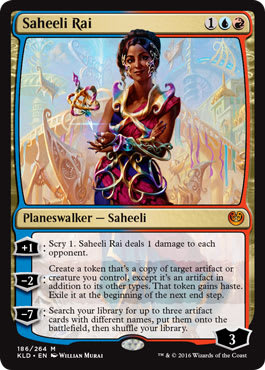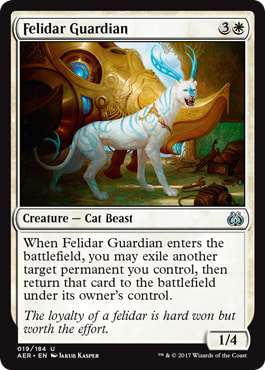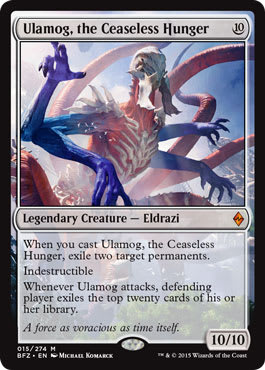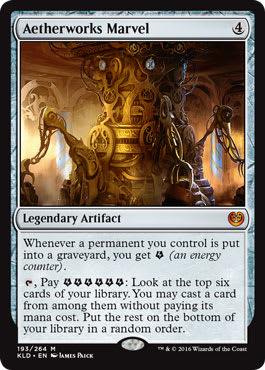On Monday, October 23, Mark Rosewater finally revealed the big change he has been talking about for the past several months. The design process that Wizards Research and Development (better known as R&D) uses to bring us Magic on a regular basis has undergone a change. If all goes according to plan, then, as Rosewater says, “everything I talked about today be invisible and just lead to better Magic.” The piece gave us, the public, a chance to see how the sausage is going to be made from here on out.
We don’t often hear about corporate practices on this level. Yes, the Magic design process is comparatively transparent; but, if Coca-Cola released an announcement that they would be changing the formula, most people would look back with a quizzical “Why?”
As discerning consumers we should ask ourselves — why this change?
To summarize what has transpired — the process has been in place behind the scenes for quite some time — the names of the stages of set design are changing as well as the timing of the different pieces. Instead of Exploratory Design leading to (Initial) Design into Devign and then Development (or Final Design), the nomenclature will be:
- Vision Design — comprised of exploratory design and crafting themes and mechanics
- Set Design — the creation of the card file itself
- Play Design — making the best possible tournament formats by tuning and testing cards
Really: read the original article to get a more comprehensive picture.
A fairly massive change that was not explicitly spelled out in the article is the change in how long the process, from exploratory design to print (not release), lasted. Under the old system, the design process took 33 months or 2 ¾ years. The new schedule calls for 20 months from start to finish — under 2 years.
Already we come to something that should give us pause. Standard, in recent years, was marred by errors. Would less time mean the folks making the game would catch the combination of Saheeli Rai and Felidar Guardian? Is the removal of a year going to prevent more Skullclamps and Smuggler's Copters?
If this were the only change, I would play Chicken Little and tell you that Atlas has most definitely abandoned his eternal endeavor. Yet, in the past three years, so much has changed with regards to Magic’s releases that nothing can be examined in a vacuum. Since 2014 here’s a list of things that have happened:
- After Khans of Tarkir and Magic Origins the Core Set was removed from the release schedule and blocks moved from three sets to two sets.
- Instead of one block a year there would now be two blocks per year.
- In line with the above change, Standard moved from rotating once every two years to rotating every time a new block was released (so three blocks would be legal at any one point).
- Standard was changed back to rotating once every two years.
- The Block structure was done away with and starting with Dominaria each set will be a standalone release.
- Starting in July 2018, the Core Set will return.
During this tumultuous time, there have been three different Banned List updates that removed cards from Standard, Wizards of the Coast got a new Chief Executive Officer, Play Design was added as a team, and Magic: The Gathering Arena was announced. There’s more change here than in the ballpit of a Chuck-e-Cheese.
Magic is different. The design model which had been in place for the better part of two decades, which served the game well, is trending toward obsolescence. In the old model, Design would create a file of cards and hand it off to Development. As Rosewater notes, Head Developer Erik Lauer wanted to get the Development/Final Design team involved earlier to help make sure that changes during this latter stage were minimized to help retain the original vision. Even this is a massive change from the ancient monolithic team that handled both phases of design. The needs of Magic are different now and patching the old system is not going to work.
So why am I not worried about a repeat of Battle for Zendikar-Shadows over Innistrad- Kaladesh Standard? The Vision-Set-Play model (VSP) has more eyes on the product and has a dedicated team for stress testing. The new system and release structure, including the Core Set will allow for the conservation of theme and mechanic space while also allowing the game designers to include more safety valves if needed, without having to violate the overarching themes of the main expansions.
The move away from the block structure will also help to reduce unforeseen interactions. Saheeli Rai and Felidar Guardian were in different sets and they may not have been tested enough together. I have a hard time imagining that if those two cards were in the same set that the Splinter Twinness of it all would have gone unseen.
With less time, designers will have to be rotated through different worlds. This is another boon as it can help prevent cross set problems. Collected Company and Reflector Mage were 9 months apart but helped to stifle Standard; Ulamog, the Ceaseless Hunger and Aetherworks Marvel were separated by a full year and an intervening block but created an unhealthy metagame.
Finally, I think this will work because Wizards thinks it will work. Wizards wants to make money and they do that by keeping environments healthy to help sell cards. The people that make Magic would not undergo this change and then proceed to tell us about it if it were not to instill confidence in the game moving forward.
We may not need to worry about the long term health of Magic but still a question lingers — why now? I have already enumerated the changes in the competitive environment over the past three years but quite a bit more has happened. Simply put, there are more competitors for Magic than I can ever recall. The refinement of the creation process appears on some level to help create a more cohesive and consistent game experience that can go toe-to-toe with digital games.
Magic is an analog game. The cards do what they do. Unlike Hearthstone and others, if a card is not functioning as intended, there is no patch that can be issued. Instead the only course of correction is the Banned list. The past year showcases exactly how disruptive liberal use of the exclusion clause can be to the overall health of the game. So Wizards has to get the cards right on the first go around.
This is a step in that direction. The smoother transition and increased lead time on what was formerly Development/Final Design, problem cards can be removed and enjoyable play environments can be crafted. Rather than ratcheting down the power level, as was done with Masques Block after Urza’s Block, the goal is a consistent product that retains replay value from set to set. Whether or not this will actually work is still to be seen. If I had to place a bet, I would put my money on “success.” The people making Magic love the game and want it to long outlast their tenure.
Let’s address what is mentioned only a few paragraphs above. One goal of sharing is to have the player base feel confident in the product. Standard has had a tough time of it recently and everyone knows it. Going forward without any change is the equivalent of the “This is Fine” meme. Wizards knew everything wasn’t fine and put the dang fire out.
Imagine a world without Mark Rosewater. Imagine a world in which Erik Lauer, Melissa DeTora, Ken Nagle, Ian Duke, Jackie Lee, Paul Cheon, Gavin Verhey and every other name you know no longer makes Magic. Think about all that knowledge that is lost.
Whenever a change of this nature happens it stems from a problem. Here we see Lauer going to Rosewater and identifying a problem. Lauer has been at this for a long time and, like Rosewater, has shortcutted many of the processes in his head. This is not uncommon to anyone who has been in a job for any length of time. The steps that once needed to be laid out in detail become second nature.
And as anyone who has ever had to deal with a long time employee leaving a position, the next person has to do more than just the job description. They need to relearn.
What I am talking about is human capital. When skilled workers leave, they are not just creating an opening, they are creating a void. There were abilities honed over time and knowledge of ways to make things smoother.
If this process had not changed — had Wizards not moved to the VSP Model — then I do not doubt that as long as Rosewater and Lauer were around the game would remain great.
And if they retired tomorrow and it fell to Nagle and Duke then I would remain confident.
But like any copy of a copy, over time it is going to deteriorate as more and more human capital is lost.
From my perspective, this change is about minimizing what is lost when people leave. If the Head Designer and Head Developer are not decade long colleagues, this will help to serve as a template for three generations down the line to help maintain high quality.
Why should we care about this change? Because it tells us that the folks who make Magic are setting themselves up to succeed long after they pass the reigns to the next generation.
































